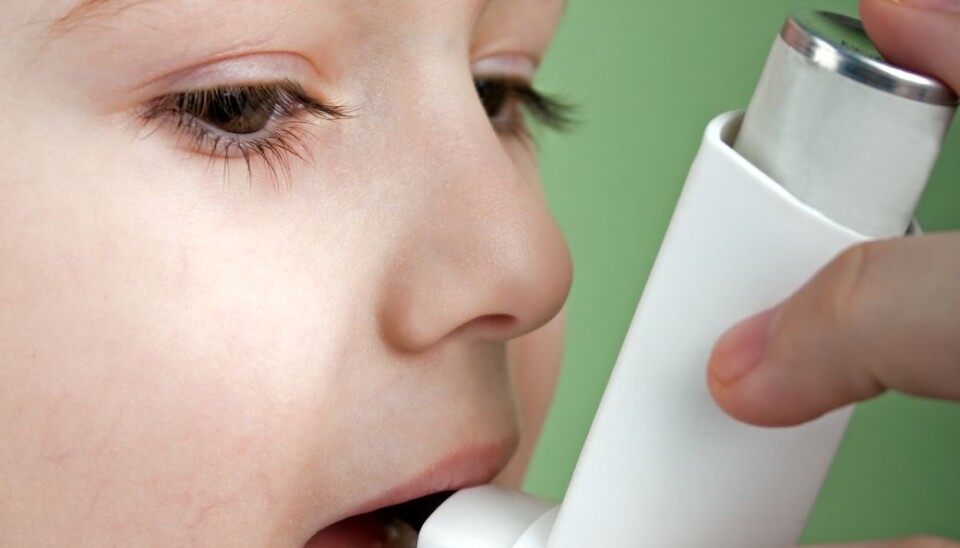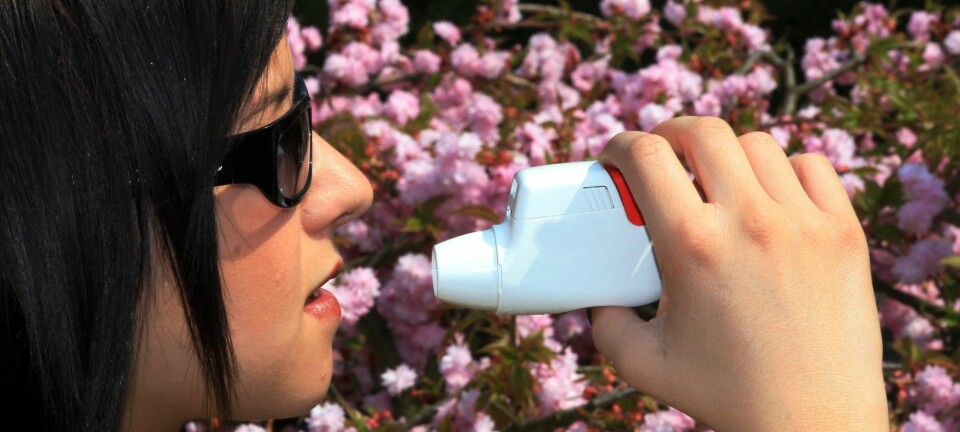
Younger kids use most asthma medicine
A study of the use of asthma medicine shows that small children take the most while young adults take the least.
Denne artikkelen er over ti år gammel og kan inneholde utdatert informasjon.
Asthma is one of the most common afflictions among children and young adults, yet its prevalence in the population is hard to quantify.
Asthma is a clinical diagnosis and there is no simple, accepted method for charting how widespread it is in Norway.
Øystein Karlstad at the Norwegian Institute for Public Health’s Department of Pharmacoepidemiology analyzed data from three nationwide registries, two surveys and the Norwegian Prescription Database in his doctoral thesis.
Studying asthma and the use of medicines to treat it among the Norwegian population aged 2-29, he found the heaviest use among children below school age and the least use among young adults.
Young boys use more medicine
One of the goals of the doctoral thesis was to get better asthma data and Karlstad concluded that prescription records could be used to help quantify the afflicted share of the Norwegian population.
The material showed that boys at a young age use more medicine than girls in their age group, but from around the age of 15 women are the more predominant users.
Altogether about 5.5 percent of the population under the age of 30 used asthma medicines in the years 2005-2007.
Large variations were discovered in the types of prescription asthma medicines used for different age groups but both sexes of the same age used the same remedies.
Low repeated usage
Less than half the users of these prescription drugs continued to purchase them regularly during the three-year period. A relatively large share had bought the prescribed medicine less than once a year.
“The relatively low repeated use rate of asthma medicine could reflect fluctuations in asthma among the patients and also shows how challenging it is to define asthma in epidemiological studies,” writes Karlstad in his thesis.
Many medicine users treated for chronic diseases
Additional afflictions are often connected with asthma, for instance allergies.
Earlier findings indicate that adults with asthma have a higher rate of several other diseases but this has not been studied much among the younger members of the population.
According to Karlstad’s findings, children and young people who used asthma medicines were more frequently treated than the rest of the young Norwegian population for eight other chronic diseases.
But he doesn’t think this proves that asthmatic children are more prone to contract chronic diseases.
“A possible explanation for the link between treatment for asthma and treatment for other inflictions is that persons who visit doctors for one malady are more likely to have other health problems diagnosed and treated,” he writes.
“Patients who are in contact with a doctor might also be more observant regarding health disorders and have a lower threshold for seeking treatment,” he suggests.
Other findings showed that persons who were prescribed asthma medicines also were more likely to receive prescriptions for sleeping pills in the course of a five-year period.
--------------------------------
Read this article in Norwegian at forskning.no
Translated by: Glenn Ostling
Scientific links
- Øystein Karlstad: Epidemiology of asthma drug use in children, adolescents and young adults in Norway, University of Oslo, 2011 (Summary in Norwegian only)
- Karlstad, Ø.et.al. (2011), Comorbidities in an asthma population 8–29 years old: a study from the Norwegian Prescription Database. Pharmacoepidemiology and Drug Safety. DOI: 10.1002/pds.2233 (Abstract)
































